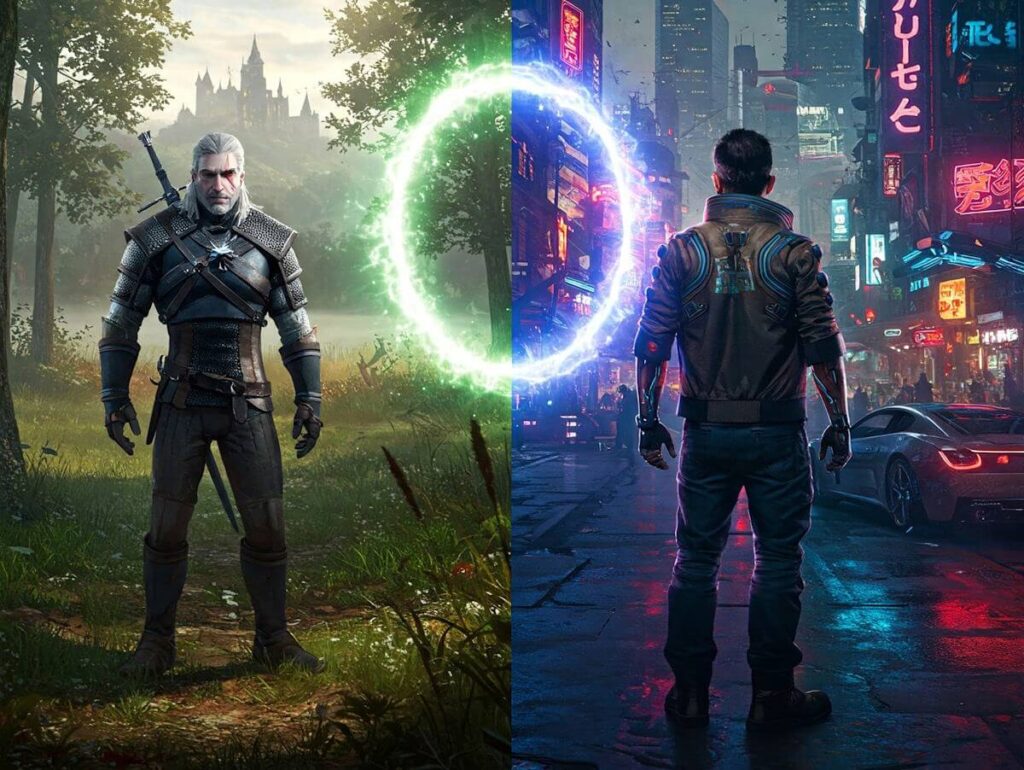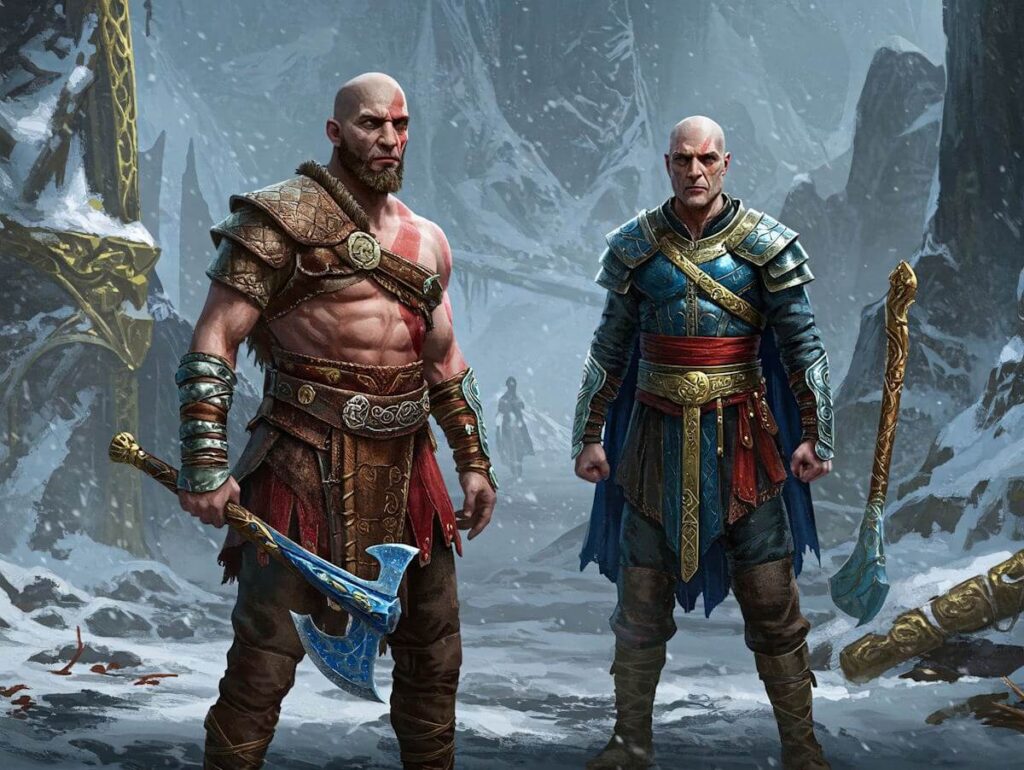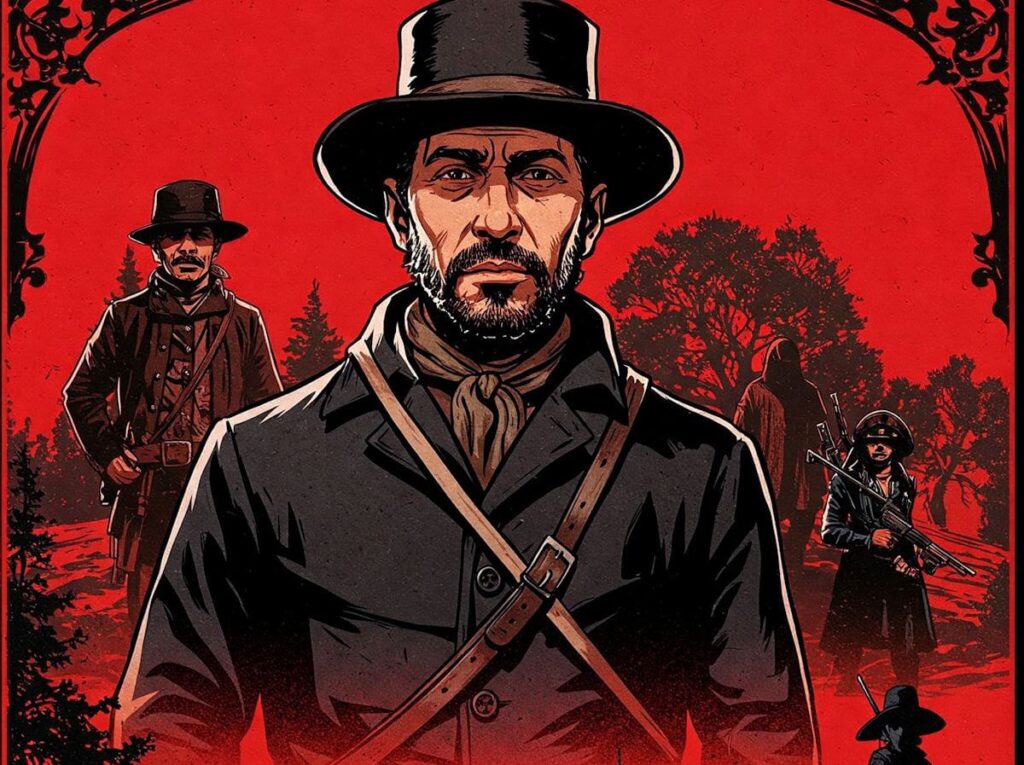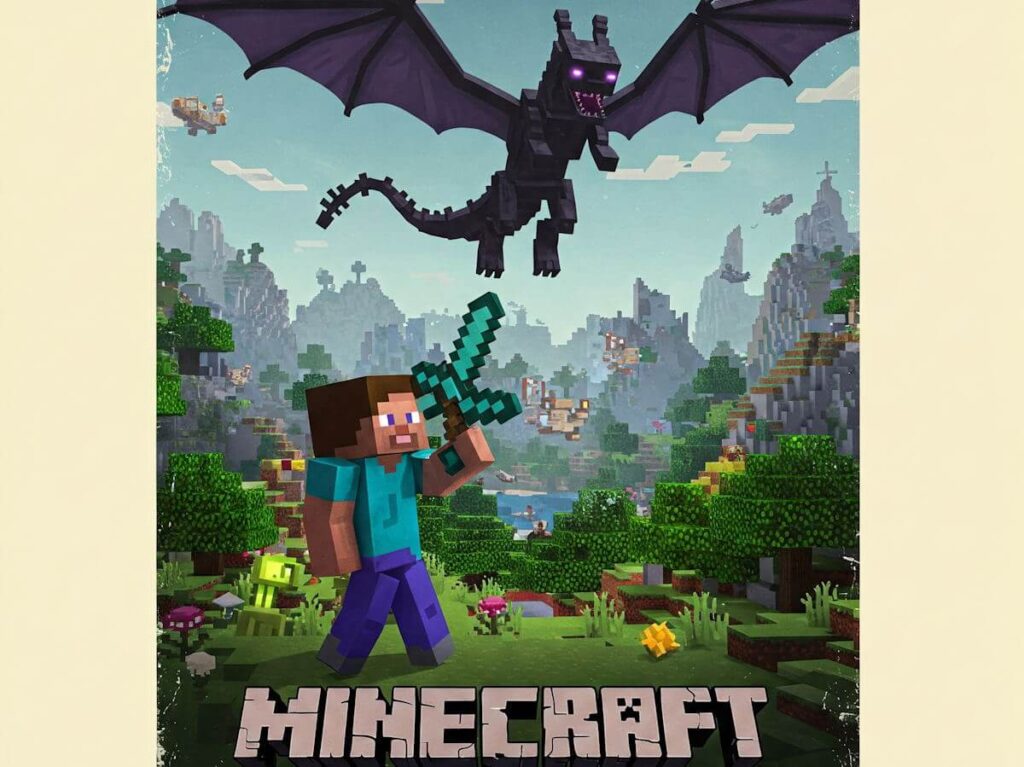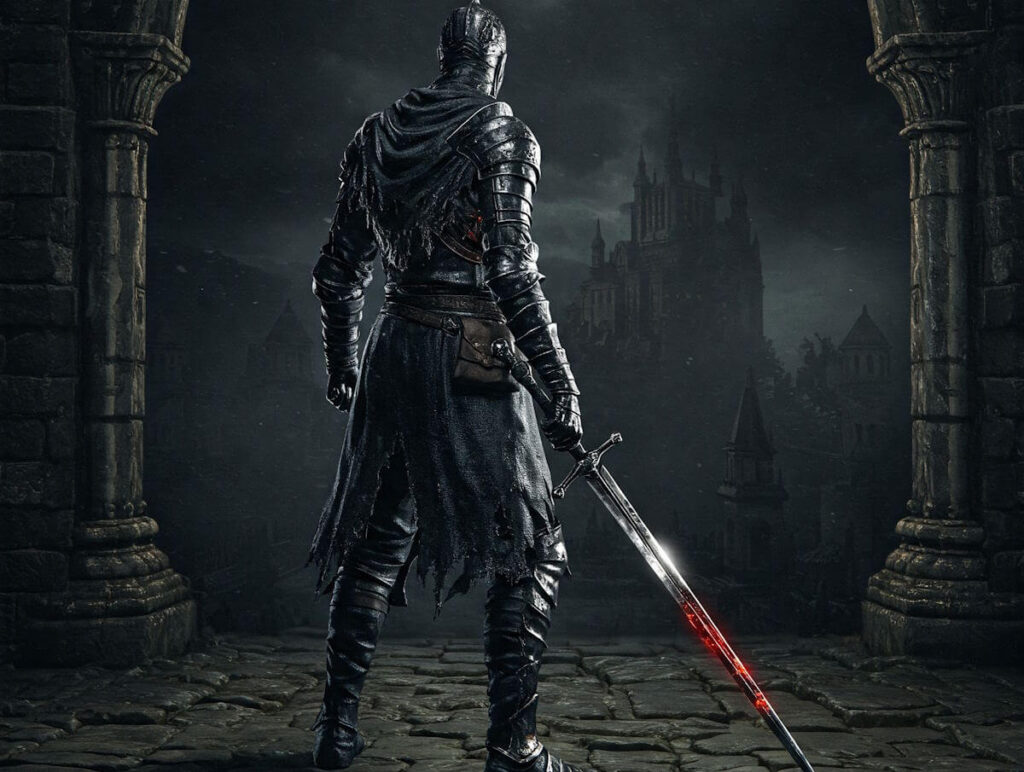Introduction to CD Projekt Red’s Legacy
CD Projekt Red, a renowned video game developer based in Poland, has established itself as a pivotal force in the gaming industry since its inception in 2002. Initially focused on localizing and distributing games, the studio rose to prominence with the release of “The Witcher” in 2007. This title, based on the literary works of Andrzej Sapkowski, introduced gamers to a richly crafted world filled with morally complex choices, intricate narratives, and memorable characters. The success of “The Witcher” led to the creation of sequels, with “The Witcher 2: Assassins of Kings” and “The Witcher 3: Wild Hunt” further cementing the studio’s reputation and enhancing its legacy.
“The Witcher 3: Wild Hunt,” released in 2015, received widespread acclaim for its expansive open-world design, deep storytelling, and comprehensive character development. This installment not only won multiple Game of the Year awards but also helped define modern role-playing games (RPGs) through its engaging gameplay and player-driven decisions. The expansive narrative and the richly detailed world of The Continent attracted a vast audience, enhancing CD Projekt Red’s standing in the gaming community.
As anticipation built for the studio’s next major title, “Cyberpunk 2077,” gamers around the world were excited to explore a different genre—cyberpunk. Despite the challenges that the game faced upon its release in December 2020, including criticism regarding technical issues and performance on various platforms, the intricate lore and ambitious design reflected CD Projekt Red’s commitment to storytelling excellence. Cyberpunk 2077’s ambitious world-building aimed to resonate with players, much like its predecessor.
As we delve deeper into the comparison between “The Witcher 3” and “Cyberpunk 2077,” it is essential to consider how these titles reflect the evolution of CD Projekt Red and their impact on the gaming landscape. The legacy built through “The Witcher” series has set high expectations, which “Cyberpunk 2077” sought to match, making this comparison particularly intriguing for gamers and critics alike.
Game Setting and World-Building
The Witcher 3: Wild Hunt and Cyberpunk 2077 are both remarkable products of CD Projekt Red, yet they offer distinctly different game settings and world-building experiences. Set in a meticulously crafted fantasy universe, The Witcher 3 transports players to the magical and often perilous world of The Continent. This region is steeped in rich lore, teeming with various mythical creatures, diverse landscapes, and an intricate social-political tapestry. The magic interwoven into the fabric of the game underscores a deep narrative that stems from Slavic folklore, allowing players to engage not only with Geralt, the main character but also the intricate histories and conflicts of the game’s inhabitants.
In contrast, Cyberpunk 2077 propels players into a sprawling urban environment rife with advanced technology and societal decay. Night City, the setting for Cyberpunk 2077, is a bustling metropolis characterized by neon lights, towering skyscrapers, and a stark divide between wealth and poverty. The world-building in Cyberpunk 2077 emphasizes a gritty realism that reflects contemporary anxieties regarding technological advancement and corporate dominance. Players experience a high-tech dystopia that is not only visually stunning but also rich in narrative depth, exploring themes of identity, transhumanism, and the implications of a hyper-connected society.
Both game settings enhance player immersion significantly. In The Witcher 3, the player becomes enmeshed in moral dilemmas influenced by lore-rich choices, while in Cyberpunk 2077, the interconnected stories unveil a society on the edge, prompting players to navigate complex relationships and interactions. Ultimately, the crafting of both worlds serves as a testament to CD Projekt Red’s commitment to creating immersive and engaging gaming experiences that resonate deeply with players.
Story and Character Development
The narrative structures in both The Witcher 3: Wild Hunt and Cyberpunk 2077 reflect CD Projekt Red’s commitment to storytelling, albeit in distinctly different worlds and contexts. In The Witcher 3, players follow the journey of Geralt of Rivia, a monster hunter navigating a richly detailed fantasy landscape. The game’s branching storylines are intricately woven with mature themes, moral complexities, and characters that exhibit significant depth. Players encounter numerous choices that not only shape Geralt’s fate but also impact the world around him, allowing for varied playthroughs and outcomes. The relationships Geralt builds with characters such as Yennefer and Ciri add to the emotional weight of the narrative, making it one of the standout features of the game.
Conversely, Cyberpunk 2077 brings players into a dystopian future, focusing on themes such as identity and societal issues within its bustling urban setting. The game allows players to choose from multiple protagonists, each with unique backgrounds and motivations that influence the storyline. This diverse character choice creates an engaging dynamic, where player decisions can alter the course of events, similarly to The Witcher 3 but within the context of technological advancement and corporate intrigue. The quests in Cyberpunk 2077 are designed to challenge players’ moral compass, which adds layers to both narrative and character development.
The contrasting approaches to storytelling between the two titles highlight CD Projekt Red’s versatility in crafting engaging narratives. While The Witcher 3 excels in developing a singular, character-driven journey, Cyberpunk 2077 offers a multifaceted exploration of various lives within a society fueled by cybernetic enhancements. Both games successfully engage players through their respective themes and character arcs, ultimately leaving a lasting impact. In conclusion, while each game has its strengths, the preference between them often hinges on the player’s affinity for either epic fantasy narratives or futuristic, socio-political explorations.
Gameplay Mechanics and Combat System
When examining the gameplay mechanics and combat systems of The Witcher 3 and Cyberpunk 2077, it is essential to acknowledge that both games offer distinct experiences that cater to their respective themes. The Witcher 3 is renowned for its intricate combat system, which seamlessly integrates swordplay, magical signs, and alchemical crafting. This combination provides players with multiple approaches during encounters, encouraging creativity and strategy. The fast-paced action requires players to become adept at dodging and parrying while effectively utilizing their abilities to emerge victorious against various foes.
Conversely, Cyberpunk 2077 presents a more modernized take on combat mechanics, blending shooting with cybernetic enhancements and hacking abilities. Players can tailor their character’s repertoire through an extensive skill tree, allowing for a personalized gameplay experience. The combat primarily revolves around gunplay, yet it is enriched by an array of tactical options, such as deploying drones or utilizing stealth to outmaneuver enemies. The various character archetypes further augment player autonomy, enabling them to engage with the world in a way that mirrors their chosen playstyle.
Both games employ skill trees that reflect their narratives and enhance player engagement. In The Witcher 3, character progression involves unlocking and upgrading skills related to Geralt’s combat techniques, enhancing his effectiveness in both melee and magical combat. Meanwhile, in Cyberpunk 2077, the ability to specialize in different combat styles—ranging from brute force to stealthy evasion—creates a unique experience for each player. The alignment of these mechanics with the overall themes of the games is crucial; The Witcher 3 immerses players in a fantasy lore steeped in skill, while Cyberpunk 2077 plunges players into a high-tech urban environment that relishes in chaos and choice.
Visuals and Art Direction
When comparing the visuals and art direction of The Witcher 3: Wild Hunt and Cyberpunk 2077, it is essential to recognize the distinct artistic visions that each title embodies. The Witcher 3 is heralded for its breathtaking landscapes, lush forests, and meticulously crafted villages. The game’s detailed character designs contribute to the immersive experience of its fantasy world, as every NPC and creature feels woven into the environment. The emphasis on realism extends to the completion of quests and interactions within this vibrant realm, enhanced by a day-night cycle and dynamic weather that enriches the overall aesthetic.
In stark contrast, Cyberpunk 2077 ventures into the realm of futuristic aesthetics, showcasing a neon-lit city that bursts with technological innovation. Night City, the game’s sprawling urban landscape, is marked by towering skyscrapers, bustling streets, and an assortment of fantastical elements that captivate players. The meticulous attention to detail in Cyberpunk 2077’s design translates to an immersive atmosphere, as various districts reflect different aspects of a dystopian future. Its art direction synthesizes a plethora of influences, from retro-futurism to high-tech visuals, creating an engaging environment.
From a technical perspective, both games exhibit unique challenges and triumphs. The Witcher 3 set a high bar for visual fidelity upon its release, and its graphics have been further refined through subsequent updates. Conversely, Cyberpunk 2077 faced a tumultuous launch that revealed issues with performance on various platforms. Nevertheless, continuous updates have improved the game’s graphical integrity, further establishing it as a visually stunning offering. In assessing the visuals of both games, one can appreciate how their respective art directions not only define their unique identities but also enhance the overall player experience.
Sound Design and Music Score
The sound design and music score play crucial roles in creating the immersive environments found in both The Witcher 3 and Cyberpunk 2077. Each title employs a distinct auditory landscape that aligns with its narrative and thematic elements, enhancing player engagement and overall experience.
In The Witcher 3, the soundscapes and music have been meticulously crafted to reflect the vast fantasy world of the Continent. The game features an orchestral score, composed by Marcin Przybyłowicz, which evokes a deep sense of lore and emotion. Instruments such as lutes and flutes, along with sweeping melodies, help to immerse players in the rich storytelling. The voice acting is equally notable, with memorable performances that bring characters to life, further adding to the emotional weight of the narrative. The ambient sounds—such as the rustling of leaves, the distant howl of wolves, and bustling towns—serve to enrich the environment, creating a feeling of authenticity and connection with the game world.
On the other hand, Cyberpunk 2077 embraces the chaotic and vibrant aesthetics of a futuristic city. The game’s sound design features an eclectic mix of sound effects that reflect its cyberpunk nature, including electronic sounds, chatter from the diverse population within Night City, and dynamic environmental audio that changes with player actions. The soundtrack, curated with an assortment of artists, encapsulates the varied musical influences that define the genre. From synthwave tracks to gritty beats, each song contributes to the atmosphere of rebellion and the neon-soaked landscape. Voice acting in Cyberpunk 2077 is equally compelling, with characters portrayed through dynamic performances that fit the storyline’s dark themes.
Both games excel in their sound design and music scores, offering players unique auditory experiences that complement their respective narratives. The Witcher 3 promotes a classic fantasy ambiance, while Cyberpunk 2077 dives into the electronic and urban chaos of a dystopian future. Each title ultimately showcases CD Projekt Red’s commitment to audio excellence in gaming.
Community Reception and Critique
The reception and critique of both The Witcher 3: Wild Hunt and Cyberpunk 2077 provide a fascinating glimpse into the expectations placed upon CD Projekt Red as a game developer. Initially launched in May 2015, The Witcher 3 enjoyed an incredibly positive reception from both critics and fans alike. Praised for its expansive open-world design, rich storytelling, and character development, the game was awarded numerous Game of the Year accolades. Players appreciated the attention to detail, the engaging side quests, and the emotional depth of its narrative, setting a high bar for future titles by the studio.
In stark contrast, Cyberpunk 2077, which launched in December 2020, faced significant backlash due to various launch issues. Despite high anticipation and an extensive marketing campaign, the game was riddled with bugs, performance issues, and design decisions that disappointed many players, especially on older gaming consoles. Critics noted the stark contrast between the ambitious vision presented in pre-launch trailers and the reality of the finished game. This resulted in a mixed reception, with many users expressing frustration and dissatisfaction, leading to numerous refunds being issued and even temporary delisting from digital storefronts such as Sony’s PlayStation Store.
CD Projekt Red’s response to the issues surrounding Cyberpunk 2077 has been active. Since its launch, the company has committed to rolling out patches and updates aimed at improving game performance and rectifying various errors. Additionally, the developer has also released downloadable content and expansions that offer new storylines and gameplay experiences. This ongoing support is crucial for re-establishing player trust and engagement with the title. Comparatively, The Witcher 3 benefitted from a strategy of gradual expansion and DLC that further enriched its story and gameplay. In conclusion, community reception for both titles highlights contrasting experiences, with The Witcher 3 regarded as a benchmark for quality while Cyberpunk 2077 continues to recover and evolve in the eyes of its audience.
Impact on the Gaming Industry
Both The Witcher 3: Wild Hunt and Cyberpunk 2077 have made considerable impacts on the gaming industry, albeit in different ways. Released in 2015, The Witcher 3 redefined the standards for open-world role-playing games (RPGs) by combining a richly detailed world with intricate narrative structures. Its success demonstrated the potential for deep storytelling in a sandbox environment, inspiring numerous titles in the years that followed to prioritize engaging narratives alongside expansive exploration. Many developers have since sought to emulate its blend of character development, moral complexity, and environmental storytelling, resulting in a new wave of RPGs that aim to capture the same essence of player engagement.
On the other hand, Cyberpunk 2077, despite its tumultuous launch in December 2020, has initiated significant discussions around game development practices, particularly regarding the expectations placed on consumers versus the realities of production. The controversy surrounding its release highlighted the industry’s growing trend of seeking profit over polish, sparking a discourse on the importance of transparency and realism in marketing strategies. This dialogue has potential long-term ramifications, as developers are now increasingly held accountable for the promises made during marketing campaigns, compelling them to prioritize quality over aggressive deadlines.
Both titles reflect emerging trends in the gaming industry, where immersive worlds and compelling narratives are becoming more crucial. As a result, future game developers are likely to be influenced by the successes and failures of these titles, potentially leading to more thoughtful and well-crafted gaming experiences. The Witcher 3 serves as a benchmark for narrative-driven open-world games, while Cyberpunk 2077 challenges the industry to critically assess development practices. In this way, both games will undoubtedly shape the future of game design and production, influencing overarching trends for years to come.
Conclusion: Which Game Prevails?
In evaluating both The Witcher 3 and Cyberpunk 2077, it becomes evident that each game offers a unique experience that resonates with diverse audiences. The Witcher 3, released in 2015, has been widely acclaimed for its rich storytelling, expansive open world, and character depth. Geralt of Rivia’s journey through the war-torn landscape of The Continent remains a benchmark for narrative-driven gaming. Players often cite the emotional weight of choices and the intricate relationships built throughout the game as key factors contributing to its enduring popularity.
On the other hand, Cyberpunk 2077, launched in late 2020, aimed to revolutionize player immersion with its futuristic setting and visual aesthetic. Though the game faced numerous technical challenges upon release, subsequent updates have significantly improved gameplay mechanics and stability. Cyberpunk 2077 appeals to those who enjoy a more modern and technologically advanced backdrop, combined with intricate side quests and social commentary on themes like identity and societal decay.
When comparing the two, personal preference plays a critical role in determining which game may be considered ‘better.’ For enthusiasts of fantasy and storytelling, The Witcher 3 likely holds a special place. Conversely, those who prefer a cyberpunk dystopia with a focus on exploration and character customization may lean towards Cyberpunk 2077. The differences extend beyond gameplay styles; they encompass cultural impact and the way players connect with each universe.
Ultimately, the designation of ‘better’ lies in individual tastes and experiences. As players reflect upon their journeys through both transformative worlds, they may find aspects of each title that resonate uniquely with their preferences, leaving room for personal interpretation and appreciation. Both games have marked significant milestones in gaming history, showcasing the innovative capabilities of CD Projekt Red.

